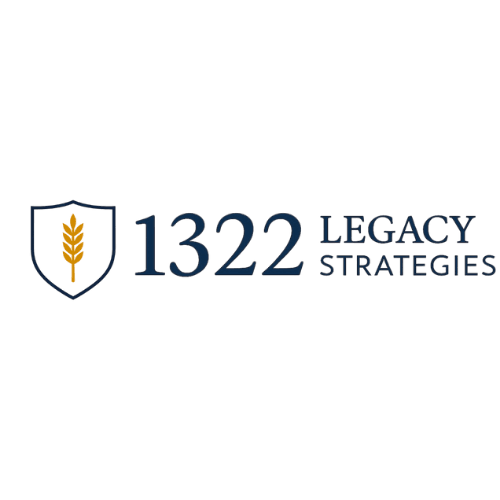The Rockefellers are remembered not just for their fortune, but for the foresight that allowed that fortune to endure for over six generations. Unlike many wealthy families whose estates are fractured by taxes, lawsuits, or poor planning, the Rockefellers built a system — one that combined trusts, family banking, and stewardship principles to ensure wealth multiplied instead of evaporating.
The same principles are available to your family today through Infinite Banking — a strategy that transforms a simple life insurance contract into a private family bank.
Why Wealth Alone Doesn’t Last
Statistics are sobering: over 70% of wealthy families lose their fortune by the second generation, and 90% by the third. Why?
- Estate taxes strip away up to 40% of wealth above the federal exemption (currently $13.61M per person in 2024, scheduled to fall by half in 2026).
- Liquidity crises — heirs often need to sell illiquid assets (real estate, businesses) just to pay estate taxes.
- Lack of structure — without a system, inherited wealth dissipates into consumption rather than being stewarded.
The Rockefellers avoided these pitfalls by creating a structure where capital was centralized, controlled, and used with purpose.
The Private Family Bank in Action
At its core, Infinite Banking uses specially designed, dividend-paying whole life insurance policies as the family’s warehouse of wealth. Here’s how it works in practice:
- Capitalization
- Liquidity Without Tax Penalties
- Estate Transfer
- Ongoing Stewardship
Strengthening with an Irrevocable Life Insurance Trust (ILIT)
One of the most effective tools for high-net-worth families is pairing Infinite Banking with an Irrevocable Life Insurance Trust (ILIT).
An ILIT owns the life insurance policy, removing it from the taxable estate. The benefits are profound:
- Estate Tax Reduction — Death benefit proceeds are not included in the taxable estate.
- Creditor Protection — Assets inside the ILIT are shielded from lawsuits.
- Control Beyond the Grave — The trust can dictate how and when heirs receive distributions (for example, funding education, entrepreneurship, or charitable work rather than unchecked spending).
- Generational Continuity — Ensures the family bank doesn’t end at one generation, but becomes a perpetual system.
The Rockefellers leveraged trusts extensively to preserve wealth. An ILIT combined with Infinite Banking essentially creates a permanent reservoir of family capital.
The Benefits Summarized
For high-net-worth families, building a private family bank provides:
- Liquidity when it matters most (covering estate taxes, seizing opportunities, weathering downturns).
- Tax efficiency (tax-deferred growth, tax-free death benefits, potential estate tax exclusion through an ILIT).
- Privacy and protection (outside the reach of creditors and shielded from probate).
- Family governance (teaching children how to steward, not squander, capital).
- Generational blessing (ensuring your grandchildren and great-grandchildren inherit more than money — they inherit a strategy).
Final Word
The question for wealthy families is not whether you will leave behind wealth — but whether that wealth will endure.
Infinite Banking, when combined with thoughtful trust planning, creates the same enduring structure that the Rockefellers used to pass blessings across six generations.
This is not about chasing returns. It is about building a system of stewardship — one that gives your family freedom, liquidity, and vision for generations yet unseen.
Control your capital. Build your legacy. Bless generations.
Addendum: Sidebar Case Study
How a $15M Estate Prepared for the 2026 Estate Tax Sunset
The Situation
A couple with a $15 million estate believed they were safe from federal estate taxes. In 2024, that was true — the estate fell under the combined exemption of $27.22M (husband and wife).
But with the exemption scheduled to drop by half in 2026, their estate was projected to face a significant tax bill. Depending on inflation adjustments, a $15M estate could be $1M–$2M over the limit — translating to several hundred thousand to a few million dollars in estate taxes. Without planning, their heirs would have to liquidate part of the business or real estate to cover the tax.
The Strategy
The couple acted early. They:
- Established a specially designed whole life policy, funded with several million in premiums.
- Placed the policy inside an Irrevocable Life Insurance Trust (ILIT) to remove it from their taxable estate.
The Result
When the estate tax exemption sunsets in 2026, the couple is already prepared:
- The ILIT-owned policy ensures that heirs receive a tax-free death benefit outside the estate.
- The trust provides the liquidity needed to pay any estate taxes in full.
- Family businesses and properties remain intact — no forced sales.
The Outcome
Instead of scrambling to pay estate taxes, the heirs inherit a fully funded family bank — a pool of private capital that can finance ventures, support education, and continue growing for generations.
Why It Matters
The Rockefellers and other wealthy dynasties preserved wealth not by chance, but by structure. By combining Infinite Banking with trust planning, families can prepare now for the 2026 exemption sunset — ensuring that taxes do not dismantle decades of hard work.
Acting today protects tomorrow’s harvest.


